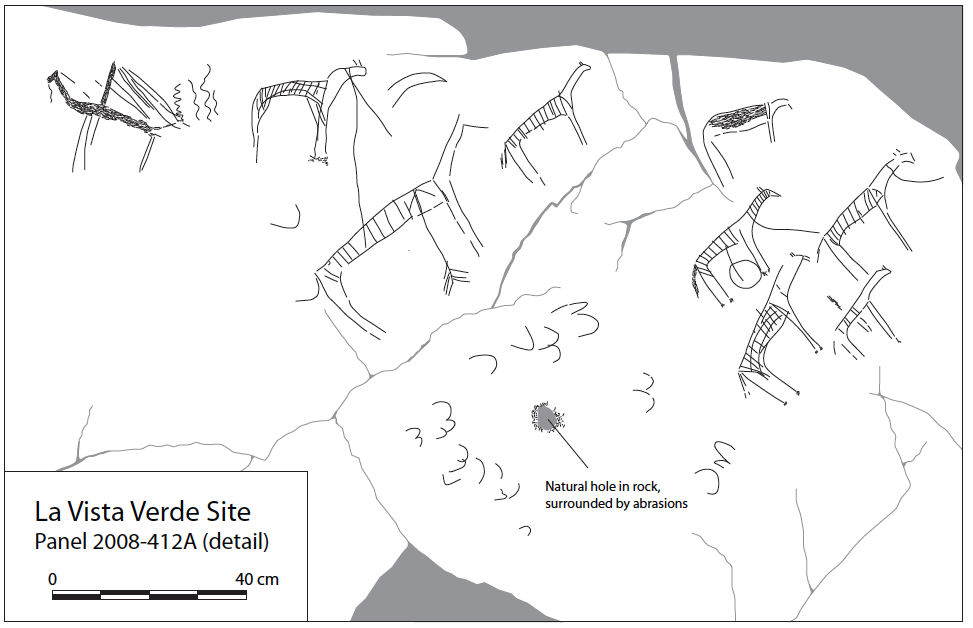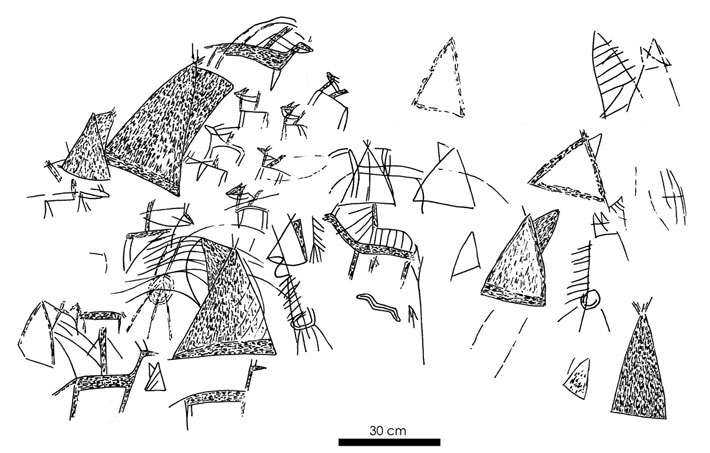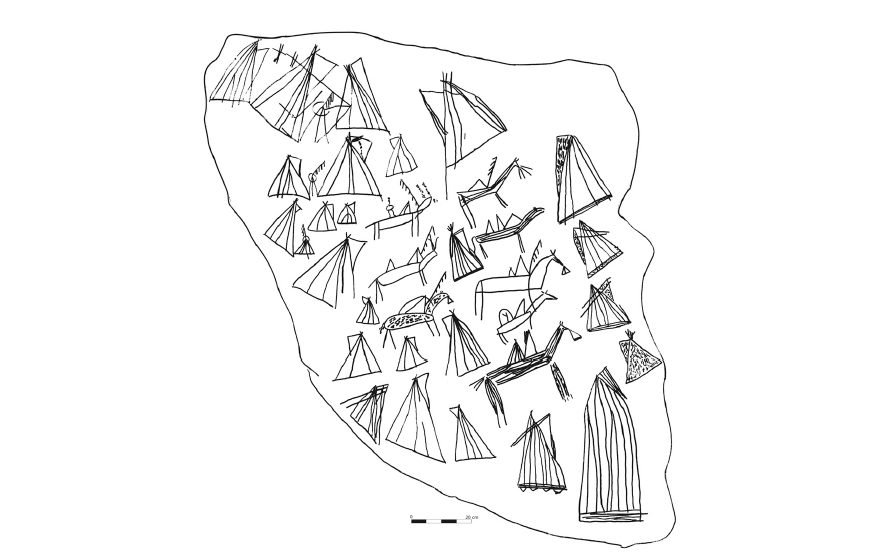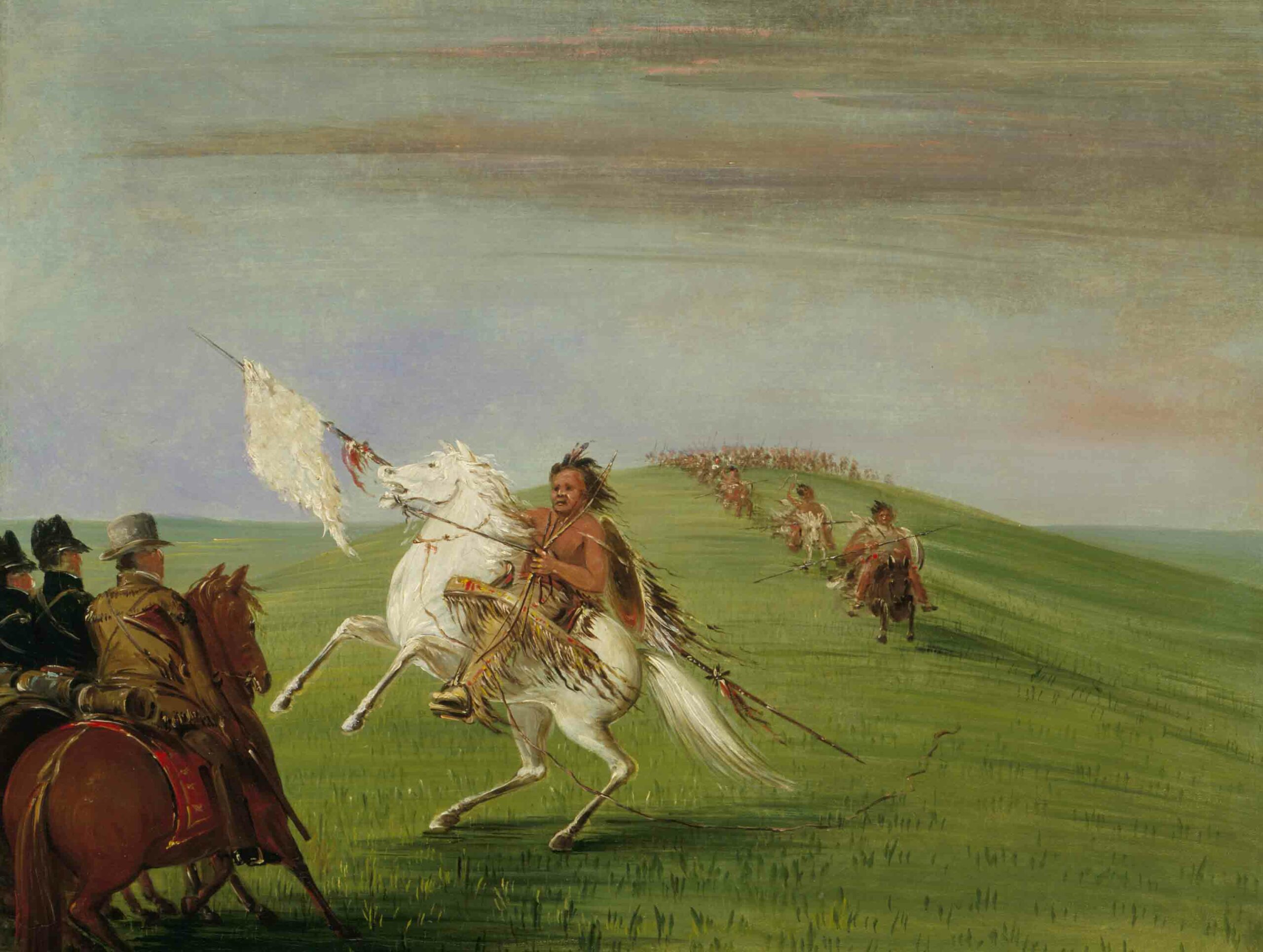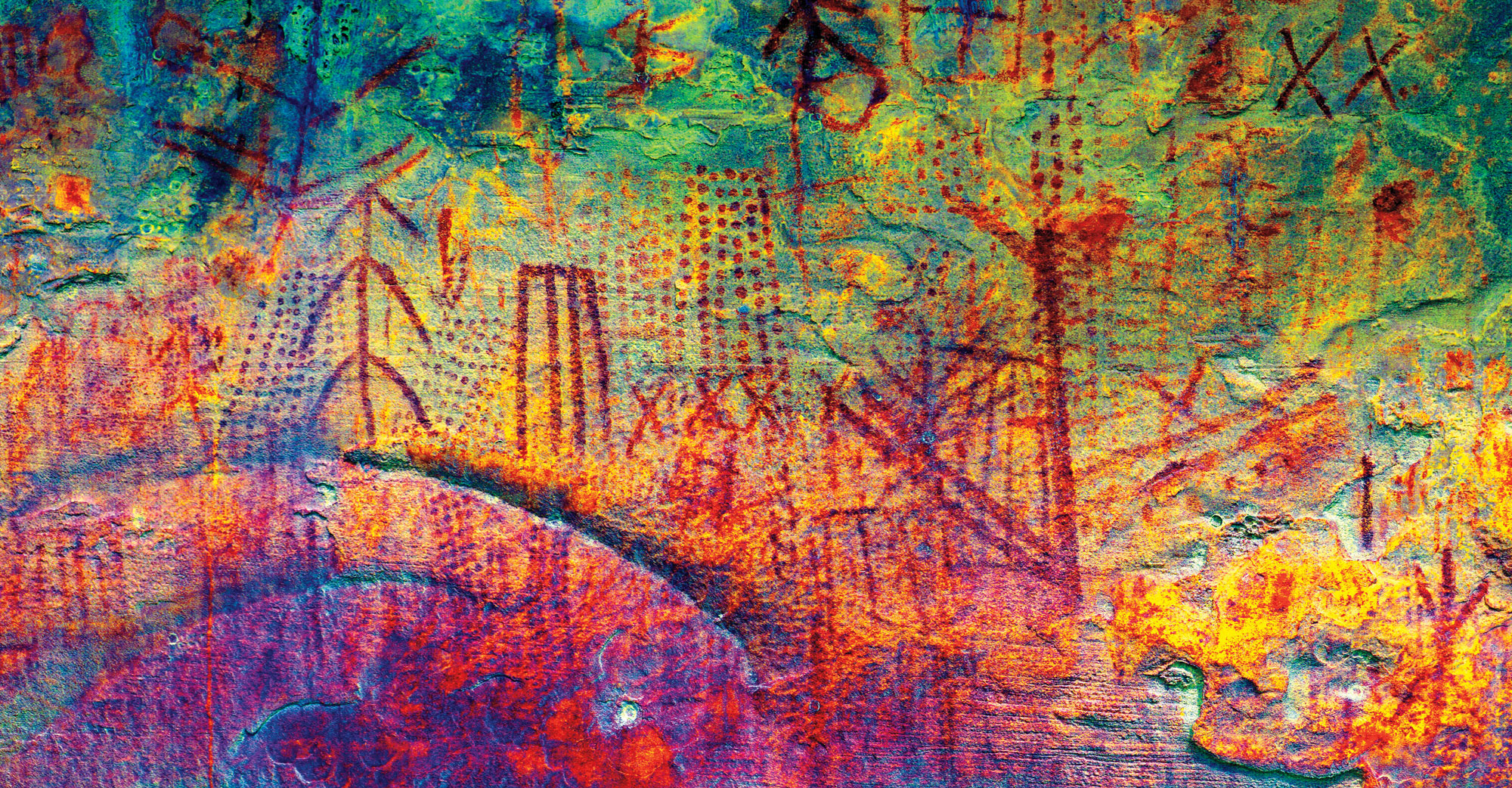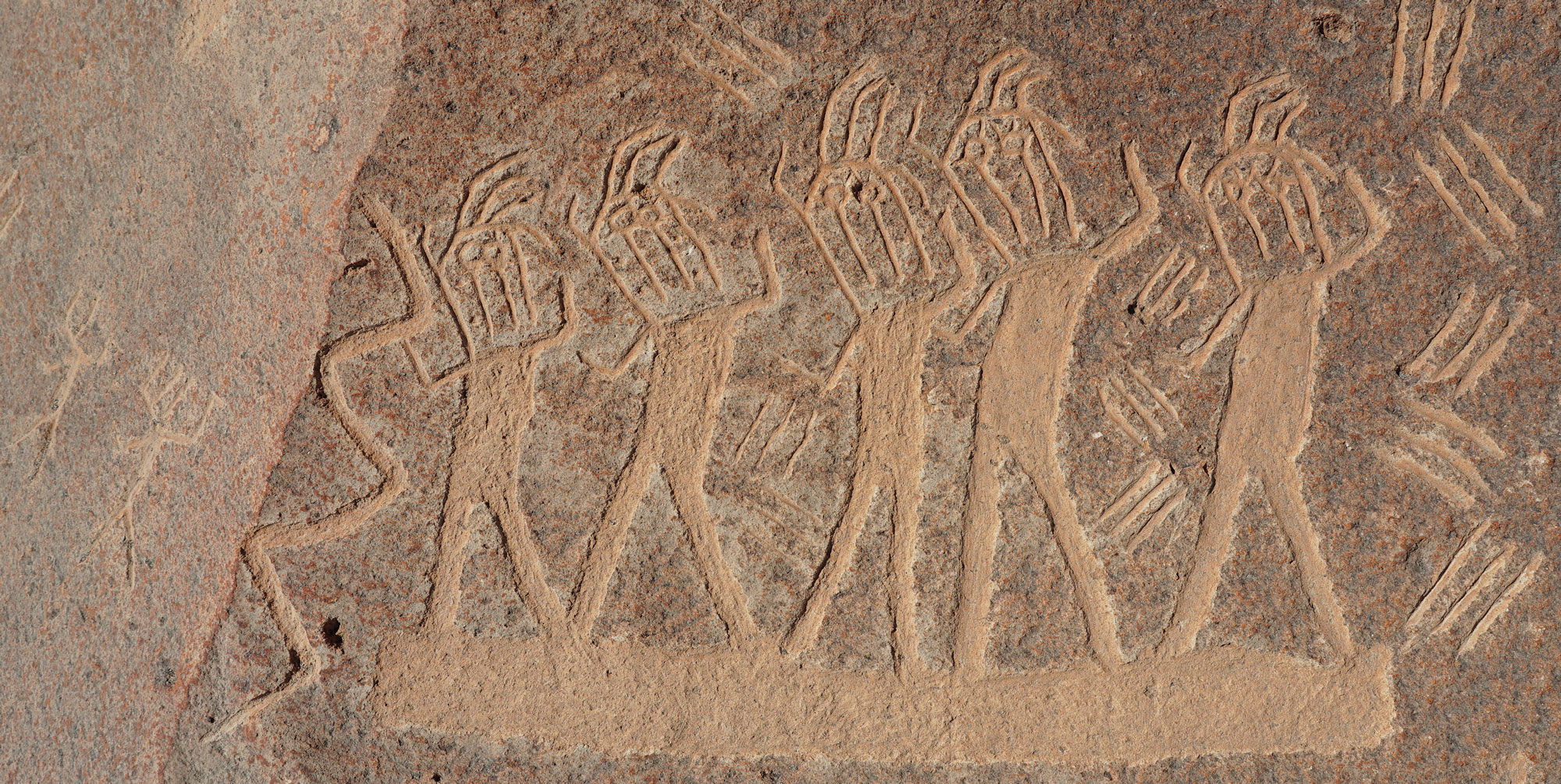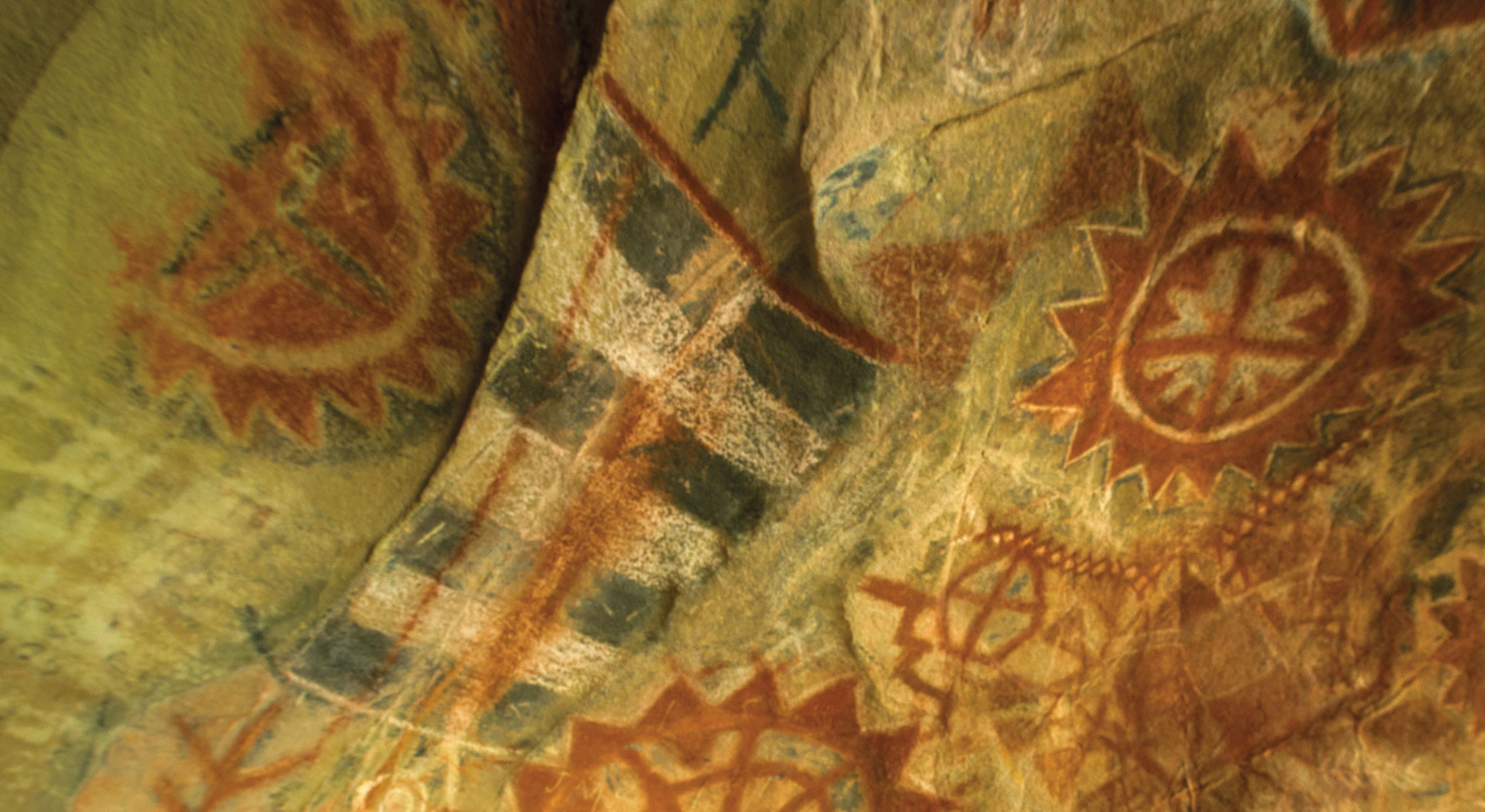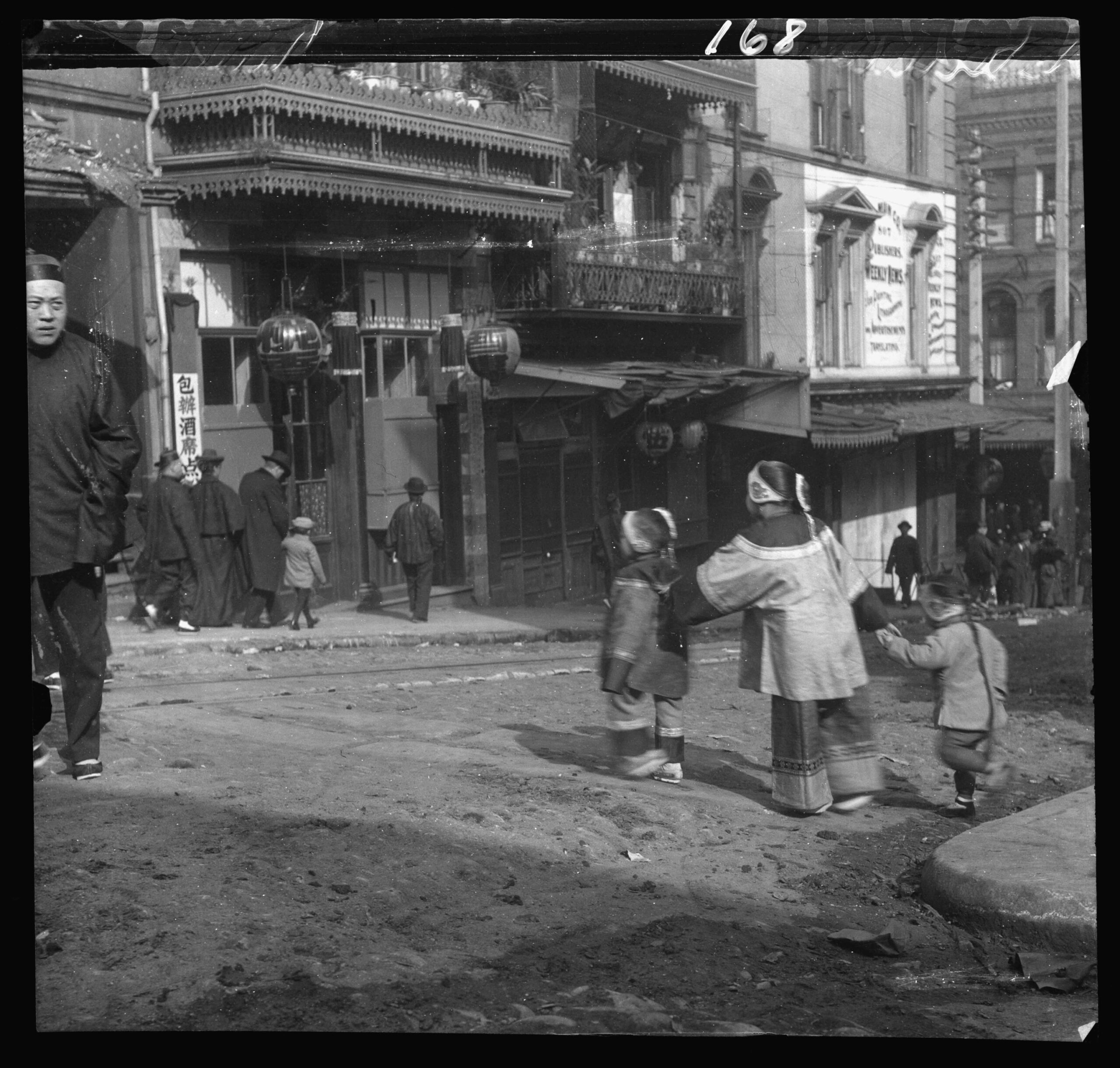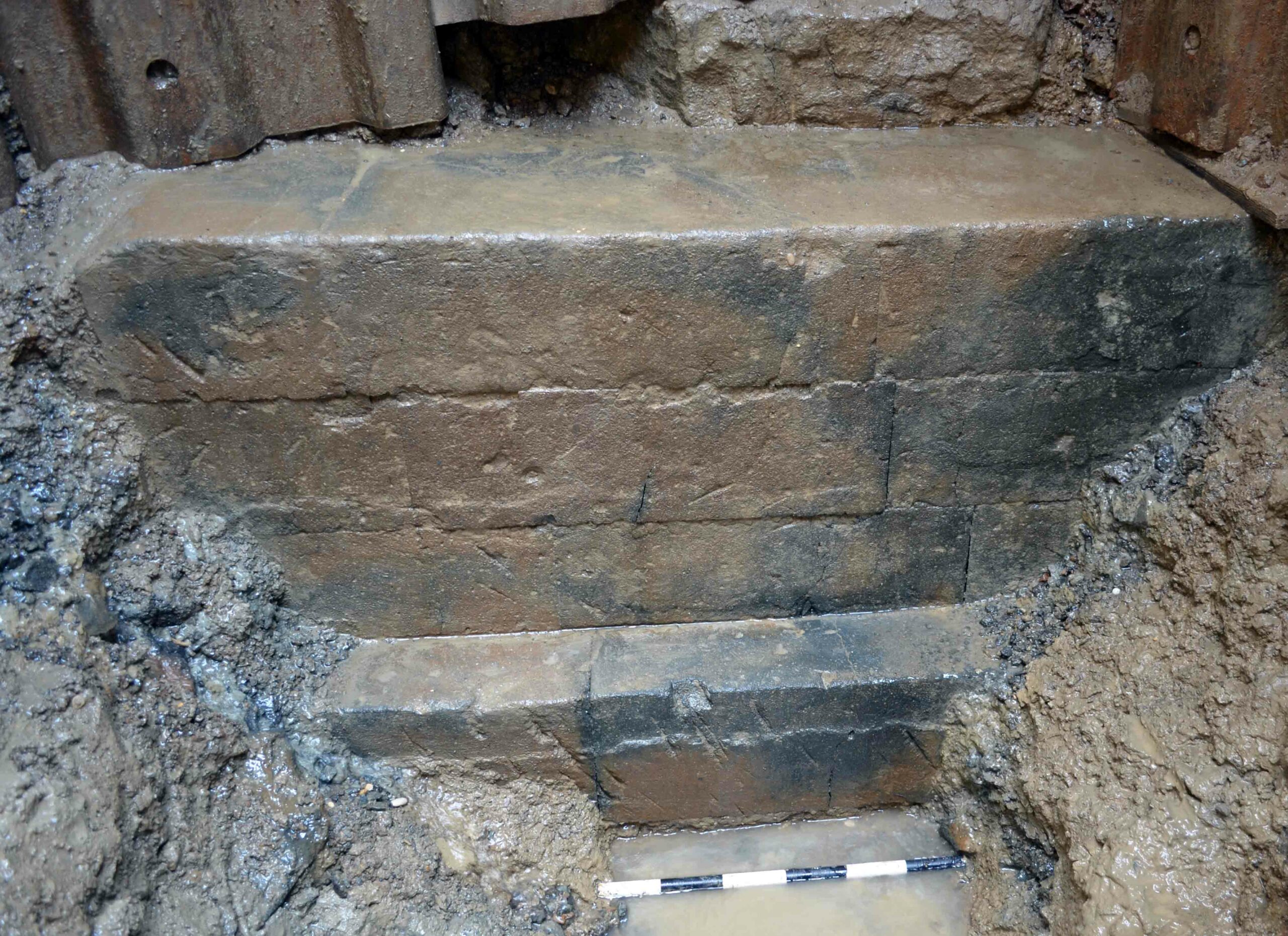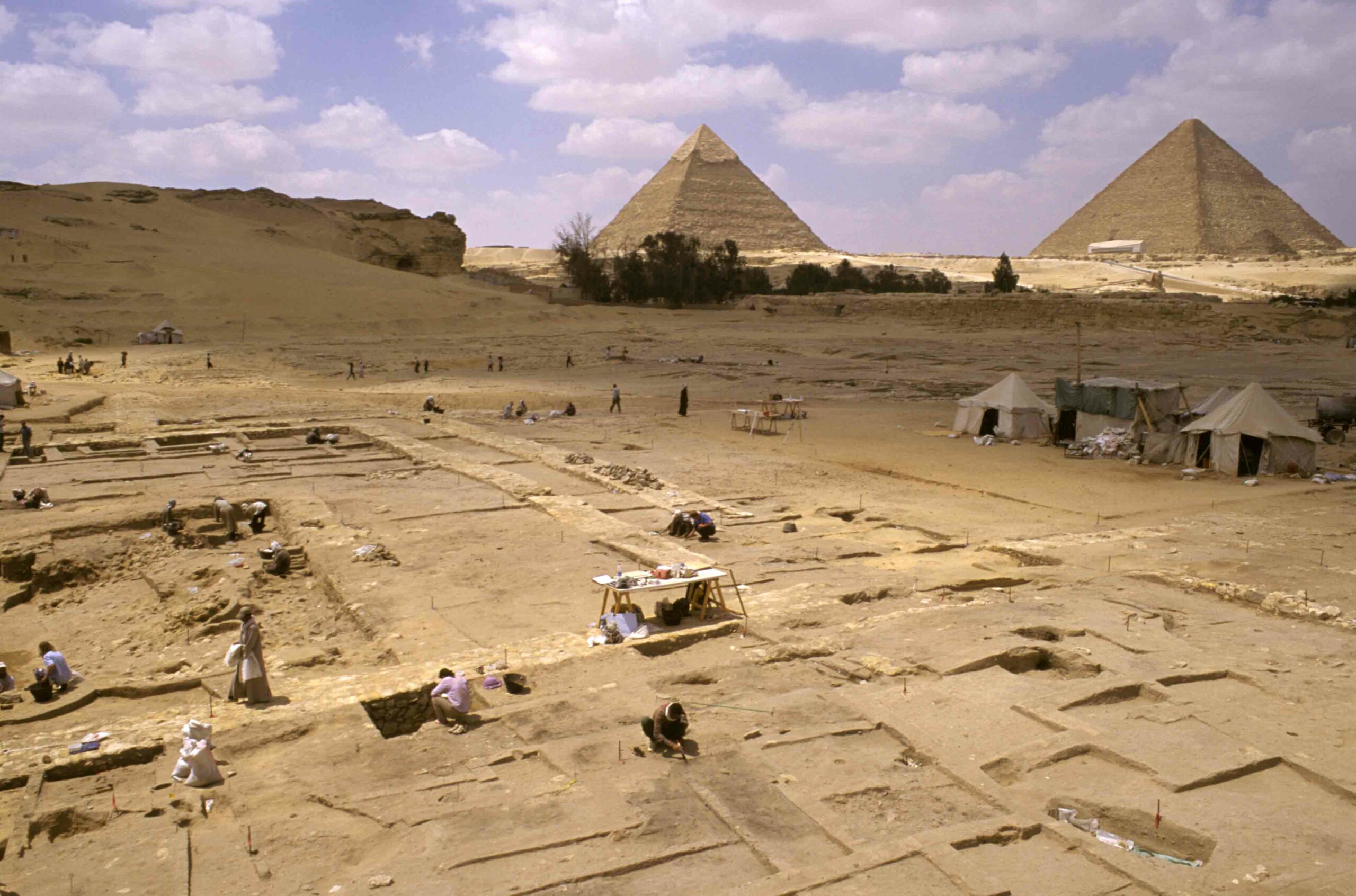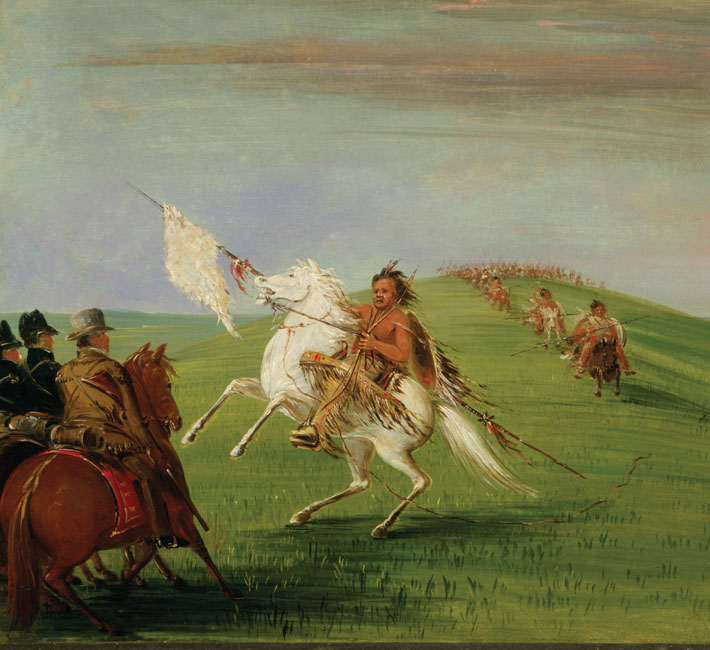
They called themselves Numunu, “the people,” and for centuries they had been hunter-gatherers living in small camps in the Rocky Mountains. But sometime before 1701, when they were first documented by the French on a map of the High Plains, the Numunu left the mountains and encountered horses, possibly trading for them with their linguistic cousins, the Ute, or the Pueblo people of northern New Mexico. By the mid-eighteenth century, they were known as Comanche, a name derived from the Ute word for “anyone who wants to fight me all the time,” and, on the strength of their unparalleled equestrian skills, they were well on their way to being the dominant Indian nation of the American West. Among the most feared mounted warriors in history, the Comanche forged a nomadic culture that served as a model for other Plains Indians. They ranged from Canada all the way to central Mexico, and carved out a homeland that would come to be known as Comanchería, which included much of modern-day Texas, New Mexico, Oklahoma, Kansas, and Colorado, and which endured until the mid-nineteenth century.
Until now, despite the fact that they controlled a vast amount of territory for almost two centuries, and at one point numbered some 40,000 strong, the Comanche have been virtually ignored by archaeologists. “We thought the Comanche had a culture designed to be invisible and to escape detection,” says Barnard College archaeologist Severin Fowles. “If they made camps that they could strike so that no trace remained for the U.S. cavalry to find a few days later, what hope could archaeologists have of finding them more than 200 years later?” But the recent identification of previously unknown panels of rock art at a Comanche encampment in New Mexico’s Rio Grande Gorge is challenging the idea that they left no physical traces behind.
The discovery coincides with the rise of a new generation of historians, who, together with the Comanche themselves, are rereading colonial records and putting together a revised account of Comanche history. This new view contradicts the image of the Comanche in the popular imagination, which casts them as the most brutally savage of the Plains Indians, whose relentless raiding stalled the expansion of the U.S. frontier for decades. In the new, more nuanced approach to Comanche history, the “Lords of the Southern Plains” are emerging instead as skilled tacticians and diplomats capable of mustering thousands of warriors at one time to advance their political and economic interests.
“The prevailing view had been that the Comanche at best held off colonial expansion until the frontier rolled over them,” says University of Oxford historian Pekka Hämäläinen. “But when we take a broader, more regional look, we can see Comanchería was a real political and cultural center in the Southwest.” In fact, Hämäläinen and other scholars say that a fresh look at the history of New Mexico and Texas suggests that, for many decades, the Comanche dominated these Spanish, and later Mexican, provinces. They extracted so many resources through “gifts” and raiding that the European settlements were virtual satellite states of Comanchería, more tied politically and economically to a mobile Native confederacy than to the government in Mexico City.

Looking at history from the perspective of the Numunu, some scholars now argue that the Comanche nation had imperial ambitions, and say that it is no exaggeration to describe their story from the late seventeenth to the nineteenth century as the rise and fall of the Comanche Empire. Oral history and written records help tell most of this story, but the early years of the Comanche, when they first forged their equestrian-based way of life, remain murky. “This crucial period is a black hole in Comanche history,” says Hämäläinen. “And the fact that the archaeological record is so scant has really crippled historians.”
The newly discovered rock art in New Mexico, found by an archaeological team, led by Severin Fowles, and that now includes Comanche Tribal Historic Preservation Officer Jimmy Arterberry, could help illuminate this largely unknown period.

In 2007, Fowles and his team began an ambitious survey of the steep slopes of the Rio Grande Gorge, a deep canyon west of Taos. No serious archaeological study had been made of the canyon, and Fowles’ interests at the time were centered on exploring how ancient hunter-gatherers living in the Archaic period (7,000 to 2,000 years ago) and the ancestors of today’s Pueblo people used the gorge as a sacred place to carry out rituals. The team discovered numerous Archaic and Pueblo rock shrines and rock art imagery that both Archaic and ancestral Puebloan people painstakingly pecked with stone tools into basalt boulders throughout the canyon, and that are still unmistakable today. Intent on making a complete record, Fowles instructed his team not to ignore graffiti made by shepherds, cowboys, tourists, and even modern-day gang members, all of whom have left their mark in the canyon over the past 200 years. The team soon found itself recording not just cattle brands cut by cowboys into the cliffs and gang markers sprayed on boulders, but many faint scratches on the rocks that were not easily identifiable as modern or ancient. Many were in the shape of triangles. “We found ourselves asking, who is this weirdo scratching triangles out here?” says Fowles. “It’s humbling to think about it now. We were recording the pecked art so faithfully, and then noting the scratches too, but as an afterthought.” That changed one day during the summer of 2008 when Columbia University undergraduate Annie Dennis took a bathroom break and came back to the group with some exciting news. She had found a boulder that she believed could solve the mystery of the scratches.
On the boulder, beneath a layer of nineteenth- and twentieth-century graffiti, were unmistakable depictions of horses and ceremonial hide bags, or parfleches, scratched into its surface in a style that Fowles recognized as belonging to Plains Indians. The mysterious triangles they had already recorded were also on the boulder, and it became obvious that they were depictions of tepees. Now that the archaeologists knew what to look for, they began to find the scratch panels everywhere in the canyon. An especially dense cluster was discovered on rugged basalt ridges that surrounded a large flat basin known as Vista Verde, not far from the boulder Dennis had discovered. These panels, which include depictions of horse herds, battles, ritual objects, and whole encampments of tepees, are in some cases within view from a hiking trail that has been used for decades. The barely discernable artwork is a rich archaeological record that no one had ever thought to look for, hidden in plain sight. “It’s hard to find something if you’re not looking for it,” says Fowles.
Immediately after discovering the rock art, Fowles contacted tribes whose ancestors once lived in the northern Rio Grande Valley, including Taos Pueblo, and three formerly nomadic groups with close connections to the area: the Jicarilla Apache, the Ute, and the Comanche. After showing the artwork to representatives of the tribes, including Arterberry, a consensus emerged that the panels had been created by the Comanche. They were known to have both raided settlements and conducted trade in horses, captives, and buffalo meat in northern New Mexico since at least 1706, when Spanish records first mention them as a threat to Taos Pueblo. Many of the Pueblos still preserve the memory of these interactions by celebrating the Comanche Dance, in which they dress as Plains Indians and reenact those fraught encounters. Around Christmas, Hispanic villages in the area long staged a folk play called “Los Comanchos,” which revolved around conflict between a Hispanic community and a group of raiding Comanche. The village of Alcalde, 25 miles downstream of the Vista Verde site, still holds the play on horseback every winter.

Despite these deep Comanche ties to the area, prior to Fowles’ discovery not a single Comanche site had been recorded in northern New Mexico. But the style of the rock art at the Vista Verde site made Arterberry confident that his ancestors had once pitched their tepees there, either sheltering in the canyon before or after raiding or while en route to the annual trade fairs held at the Pueblos and Hispanic villages. The depictions of tepees, horses, and warriors are all unmistakably in an early style of the Biographic tradition of Plains rock art, in which the Sioux, Crow, and Blackfeet, among others, used realistic forms to narrate actual events, such as raids or buffalo hunts. The Comanche were known to have made similar, isolated images in sandstone, but the sheer mass of depictions at Vista Verde is unprecedented. “I’ve seen lots of individual Comanche rock art panels,” says Arterberry. “But this is unique, to see them together. Not only is all our history here, but walking through the site is like walking through a timeline.”
Last August, Arterberry and Fowles visited Vista Verde to share their thoughts on the site, which sits about halfway up the side of the gorge and overlooks the confluence of the Rio Grande and the Rio de Taos Pueblo. The Comanche are known to have preferred camping where two rivers came together, which they believed had strategic value. With several Spanish settlements less than half a day’s ride from Vista Verde, it was an ideal location from which to launch raids or trading missions.
Above the Vista Verde basin are two stone alignments, which Fowles notes could have served as blinds for Comanche warriors guarding the main camp on the flat ground below. Two boulders nearby, including the one discovered by Dennis, are covered with images of parfleches, which had sacred significance to the Comanche. On one boulder, there is an almost life-size depiction of a horse carrying a rider who bears a shield. Short scratches emanating from the horse’s mouth seem to represent the animal’s breath, perhaps condensing on a cold winter day. The images are difficult to make out in the direct sun, but when a cloud passes overhead, the horse seems to suddenly leap off the rock surface. Recording the images on the panels is painstaking work, since each individual scratch has to be traced across the rock surface. “It’s almost as if we have to reenact the gestures of the Comanche artist who made it three centuries ago,” Fowles explains. Often, it’s not clear what the image depicts until the tracing is completed and digitized.

Sheltered as it is by basalt ridges, the Vista Verde basin would have been an ideal place to pitch a large group of tepees. Fowles’ team has found several tepee rings here, and remote sensing shows still more lying just a few inches beneath the surface. The team failed to find any clear evidence of hearths, meaning Vista Verde was at least at times a “cold camp,” where no fires were made for fear the enemy would see them. On the boulders around the edge of the basin, Comanche warriors scratched numerous battle scenes filled with a number of telling details. One depicts two warriors shooting arrows at one another. One of the combatants is small and wields a simple bow. The other, presumably a Comanche warrior, is much bigger and brandishes a larger bow. Next to him a “tally” of arrows suggests he shot many more arrows than his smaller opponent. He is also wearing unusual headgear that Arterberry thinks is a Catholic missionary hood, which Comanche warriors were known to steal in raids and then wear into battle. A stylized bear is depicted rising behind the warrior, along with a shield bearer, and both seem to be coming to the warrior’s aid. The shield bearer wears a war bonnet that to Arterberry seems to be in the style of the Ute, for whom the bear was sacred. In the early eighteenth century, the Ute and Comanche were close allies. If the third figure is Ute, the scene could memorialize an important diplomatic relationship that helped enable the Comanche rise to power in the Southwest.
Not far from this panel, the team’s remote sensing devices picked up an unusual horseshoe-shaped anomaly. Ute tribal members identified it as a clearing for the Bear Dance, an important Ute ritual. In the early eighteenth century, before their relationship with the Comanche collapsed and the two groups became bitter rivals, the Ute may have camped here with their then-allies. “It’s interesting that there are no images of Europeans at the site,” says Fowles. “The Comanche are depicting a world where Indian-to-Indian relations are still much more important than relationships with Europeans.” So far, the team has not found any warriors at Vista Verde depicted with guns, which has led them to date the rock art to before the 1740s, when the Comanche began to acquire firearms from the French.
Across the basin, more faintly scratched images depicting raids in progress have been found on boulders. Most of these chaotic scenes are confusing to anyone trying to make them out today. Fowles thinks that is because, unlike most rock art, these panels were not intended as permanent works, but were created by warriors narrating a battle scene for an audience, much the way a football coach might diagram a play on a chalkboard. Some of the warriors on the panels have meandering lines coming from them that touch other combatants. These could be depictions of “counting coup,” or the act of touching your opponents in battle without harming them, which Plains Indians considered the bravest act a warrior could commit, and one that would win him much prestige. Fowles and Arterberry believe that Comanche told their stories of bravery and scratched the scenes into the rock before an audience of fellow warriors so their deeds would be publicly acknowledged. The desire to boost individual prestige through battle was one of the engines of Comanche society, the only way some young bachelors could expect to win a wife. “Fowles and his team are showing how this rock art illuminates the social dynamics and the ambition of the Comanche in this early period,” says Hämäläinen. “It’s very exciting.”
The raiding depicted in the scratch panels at Vista Verde helped shape not only Comanche history, but the history of North America as a whole. In the early nineteenth century, the descendants of the warriors who camped at Vista Verde made military forays into northern Mexico’s mining districts, once coming within 200 miles of Mexico City itself. These expeditions, along with raids by other Native groups, sapped the military strength of northern Mexico. Because of the desolation caused by these campaigns, University of California, Berkeley, historian Brian DeLay calls this conflict “The War of a Thousand Deserts,” and argues that it left Mexico vulnerable to the American invasion of 1847, which in turn led to the U.S. annexation of the Southwest and California. “The Indian raiding certainly influenced the outcome of the U.S.-Mexican War,” says DeLay. “I think you have to think of the Comanche as important geopolitical players.”

Not far from the campsite at Vista Verde is a large stretch of ground bounded by cliffs that would have made a perfect natural corral. A spectacular panel scratched on a boulder here depicts a horse raid in progress, perhaps one of the raids that periodically left the colony of New Mexico nearly bereft of mounts. On the panel, a dozen warriors with war bonnets streaming behind them charge on horseback after dozens of arced lines that are stylized depictions of horses. It is Comanche history recorded by the Comanche themselves.
For Arterberry, who is also an artist, it’s the most important panel at the site. “I love this sea of horses,” he says. “As an artist, I see a change in tradition from two-dimensional art to this almost abstract style. You can clearly see the warriors on horses, with their war bonnets, lances, and long ropes. And you see them in juxtaposition to a sea of abstract horses, each one drawn distinctively and each one conveying a multitude of horses. It’s very contemporary.”
Depictions of single horses, of warriors riding horses into battle, and even of stylized tepees riding horses, abound at Vista Verde. In 1875, when the U.S. cavalry surprised and routed the last nomadic Comanche band in Texas’ Palo Duro Canyon, the first thing the soldiers did was slaughter the group’s horses. Only with their horses gone did the band finally surrender.

In summer 2013, Fowles showed Arterberry a new panel the team discovered not far from the Vista Verde site. Fowles and his group thought it depicted a horse and some other objects, but were uncertain. Upon seeing the panel, Arterberry knew instantly that it showed a galloping horse and a comet in the sky, both heading toward the sun. After looking at historical accounts later, Arterberry would find that in 1680 there was a comet visible by daylight. Looking at the panel in the field, though, he knew that the Comanche who created it was celebrating the connection between the horse, the sun, and a celestial event. “Anthropologists sometimes call us sun worshippers,” says Arterberry. “We’re not, really. We think of the creator as our father, a great deity beyond, who the sun can represent. But to see the sun and the horse and the comet here is very powerful. The creator gave us the horse, and that’s the beginning of the story.”
Slideshow: Rock Art of Comanche Warriors
In New Mexico's Rio Grande Gorge, Barnard College archaeologist Severin Fowles and his team have recorded hundreds of panels of barely visible rock art left by Comanche around a basin known as the Vista Verde site. Groups of Comanche traveled to the area from the Great Plains during the early eighteenth century to take part in raiding or trading expeditions. Many of the panels depict warriors on horseback fighting other Native Americans or capturing horses. Unlike most rock art, which often represents timeless, ritually important subjects, these panels appear to depict real-life events, perhaps traced on the rocks by warriors eager to remind their fellow Comanche of their brave exploits. Below are tracings Fowles and his team made of some of the panels, which were scratched onto basalt boulders.
